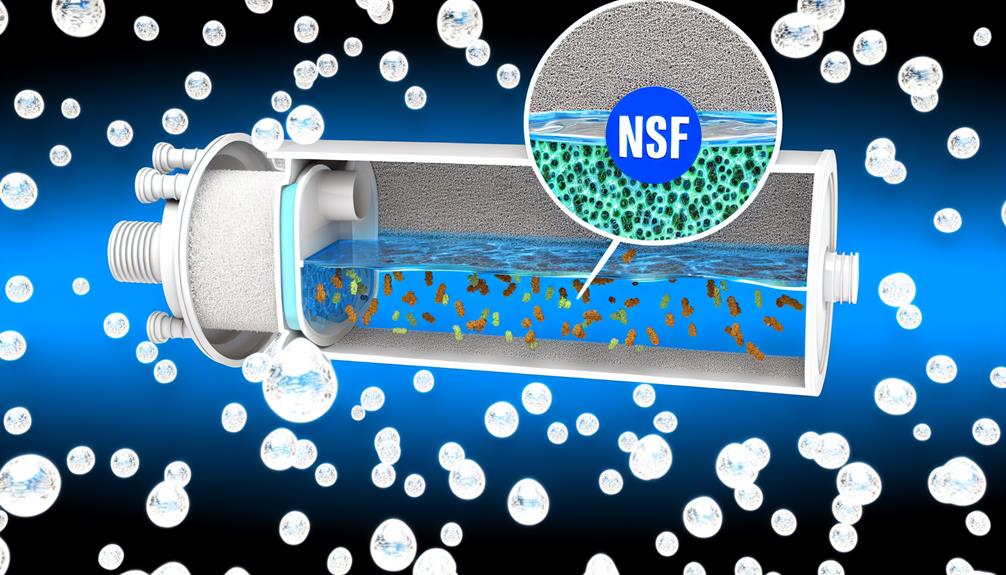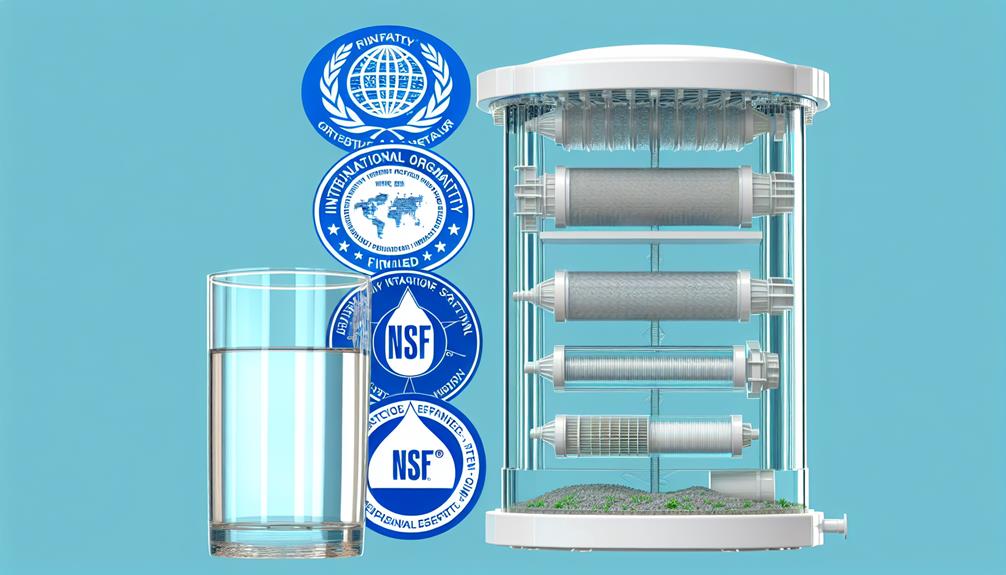As you consider the safety of your drinking water, the effectiveness of your water purifier, and the impact of your choices on the environment, it's essential to understand the role of EPA standards. These regulations are not arbitrary hurdles but benchmarks that ensure the water you consume is free of harmful contaminants.
By complying with these standards, you're not only safeguarding your health but also upholding a commitment to environmental stewardship. The question isn't just whether you can afford to meet these standards, but rather, can you afford not to?
With potential health risks and legal ramifications at stake, it's worth exploring what lies beneath the surface of EPA compliance.
Understanding EPA Water Standards
To safeguard public health, the EPA meticulously sets drinking water quality standards for Public Water Systems (PWSs), which homeowners should meet or surpass with certified filtration systems. Under the Safe Drinking Water Act (SDWA), these federal regulations are critical in managing the presence of chemical contaminants that could lead to adverse health effects if consumed at high levels. Your role in this regulatory landscape is to ensure that the water purifying solutions you adopt at home align with these established benchmarks.
The SDWA mandates maximum contaminant levels for a variety of substances that can be found in water supplies. It's these federal standards that certified filtration systems aim to meet or exceed. By doing so, they help protect you from waterborne diseases and contribute to the overall public health mission. It's not merely about reducing potential health risks; compliance also plays a part in environmental stewardship by minimizing reliance on plastic water bottles.
You must stay informed about both federal and state regulations, as state standards can be more stringent. When selecting a filtration system, scrutinize its specifications to ensure it can effectively reduce the concentration of chemical contaminants below the maximum levels prescribed by the EPA. This vigilance is your contribution to the collective effort of maintaining a safe water supply.
Health Implications of Non-Compliance
Failing to adhere to EPA water purifier standards exposes you to harmful contaminants that could compromise your health. The Safe Drinking Water Act (SDWA) was enacted to protect public health by ensuring the quality of Americans' drinking water. Under this act, the EPA sets legal limits on the levels of certain contaminants in drinking water.
The health implications of not complying with these standards are significant and can affect human health in various ways:
- Increased Risk of Disease: Non-compliance can lead to waterborne diseases caused by pathogens such as bacteria, viruses, and parasites.
- Exposure to Chemicals: Harmful chemicals, including those linked to cancer and other serious health issues, may be present in your water.
- Heavy Metal Poisoning: Ingesting heavy metals like lead and mercury can lead to neurological and developmental disorders, especially in children.
- Compromised Immune Systems: Contaminants can weaken your immune system, making you more susceptible to illness.
Legal Consequences for Violations
While non-compliance with EPA water purifier standards can severely impact your health, it also carries substantial legal repercussions for manufacturers and distributors. You must understand that the EPA has established minimum requirements that ensure the safety and reliability of drinking water. These drinking water regulations aren't mere suggestions but federal mandates that protect public health.
Failing to adhere to these requirements on public water systems can trigger a cascade of legal consequences for violations. If you're a manufacturer or distributor, non-compliance can result in hefty fines and penalties that could significantly dent your financial bottom line. Regulatory agencies are empowered to take legal actions and enforce measures that may include mandatory recalls or operational shutdowns.
Moreover, failure to meet these regulations can expose you to legal liability and civil suits, particularly if your actions result in harm to consumers. Such violations also tarnish your company's reputation, eroding public trust—a commodity you can't afford to lose.
In the most severe cases, non-compliance with EPA standards could lead to criminal charges. If found guilty, you or your corporate officers could face imprisonment. It's not just about following rules; it's about safeguarding your business against legal risks and ensuring the health of your consumers.
Advantages of Certified Purifiers
Certified purifiers offer a quintet of advantages, including meeting stringent industry standards for contaminant removal, which ensures your drinking water's effectiveness and safety. When you're examining Drinking Water Information, it's crucial to understand that not all purifiers are equal. Purifiers that adhere to NSF standards and EPA guidelines are designed to treat drinking water with a level of precision that uncertified models can't guarantee.
Here's what you gain from choosing a purifier that's up to code:
- Assured Quality: You're guaranteed a system that's been rigorously tested to remove specific contaminants effectively.
- Health Protection: Certified purifiers reduce the risk of exposure to harmful substances, safeguarding your family's wellbeing.
- Regulatory Compliance: You'll have peace of mind knowing your water treatment method aligns with legal requirements.
- Long-Term Savings: By preventing potential health issues, you're also avoiding costly medical bills down the line.
The advantages of certified purifiers aren't just about meeting a regulatory checklist; they're about ensuring that every glass of water you drink contributes to, rather than detracts from, your health and safety. By investing in certified water treatment solutions, you're prioritizing long-term wellness over short-term savings.
Maintaining Regulatory Compliance
To ensure your water purifier remains compliant with EPA standards, it's essential to perform regular maintenance and replace filters as recommended by the manufacturer. This disciplined approach to upkeep not only sustains the efficiency of your system but also ensures that your drinking water is purified to a standard that safeguards public health.
Choosing a certified filtration system is a proactive measure that guarantees the product you rely on aligns with stringent industry criteria for contaminant removal. Regularly reviewing Consumer Confidence Reports (CCRs) empowers you to determine whether your current water purifier is up to the task of mitigating the specific contaminants found in your local water supply.
Water treatment professionals can provide expert advice, ensuring that your selection of water purification equipment meets or exceeds regulatory requirements. This strategic consultation is critical as it informs your understanding of the necessary steps to maintain compliance and thereby protect the quality of your drinking water.
In essence, maintaining regulatory compliance isn't a one-time accomplishment but a continuous commitment to monitoring, assessing, and responding to the evolving standards that govern water purity. It's your responsibility to ensure that your water purifier operates within these parameters, thus providing you with the assurance that your drinking water is consistently safe and clean.

